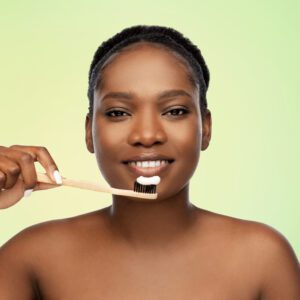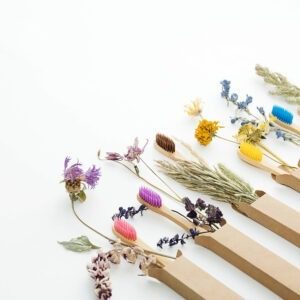A comprehensive guide on selecting the right bamboo toothbrush for your needs.
With various styles and bristle types available, choosing the right bamboo toothbrush can be overwhelming. This guide helps you find the perfect fit.
Guide to Choosing the Best Bamboo Toothbrush
In recent years, bamboo toothbrushes have gained immense popularity as an eco-friendly alternative to traditional plastic toothbrushes. With millions of plastic toothbrushes ending up in landfills and oceans each year, switching to bamboo is a simple yet impactful step toward reducing your environmental footprint. But with so many options available, how do you choose the best bamboo toothbrush for your needs? Don’t worry—we’ve got you covered! This friendly guide will walk you through everything you need to know.
Why Choose a Bamboo Toothbrush?
Before diving into the selection process, let’s quickly recap why bamboo toothbrushes are worth considering:
- Eco-Friendly Material: Bamboo is a renewable resource that grows quickly without the need for pesticides or fertilizers. Plus, it’s biodegradable, meaning it won’t sit in a landfill for hundreds of years like plastic.
- Sustainability: Many bamboo toothbrush brands focus on sustainable practices, from sourcing to packaging.
- Aesthetic Appeal: Let’s be honest—bamboo toothbrushes just look cool! Their natural, minimalist design can add a touch of elegance to your bathroom.
- Functionality: Despite being eco-friendly, bamboo toothbrushes are just as effective at cleaning your teeth as their plastic counterparts.
Key Factors to Consider When Choosing a Bamboo Toothbrush
Now that we’ve established the benefits, let’s look at the key features to consider when picking the perfect bamboo toothbrush.
1. Bristle Material
The bristles are arguably the most important part of any toothbrush. For bamboo toothbrushes, you’ll typically find two main types:
- Nylon Bristles: Most bamboo toothbrushes use nylon bristles because they are durable and effective at cleaning teeth. Look for bristles made from recyclable or BPA-free nylon to ensure they’re as eco-friendly as possible.
- Plant-Based Bristles: Some brands offer bristles made from castor oil or other plant-based materials. While these are more environmentally friendly, they may not be as widely available or as durable as nylon bristles.
Keep in mind that no toothbrush bristles are currently 100% biodegradable, so it’s important to dispose of them properly (more on that later).
2. Bristle Softness
Your oral health needs will determine whether you should go for soft, medium, or firm bristles:
- Soft Bristles: Recommended for most people, especially those with sensitive gums or teeth.
- Medium Bristles: A good option if you prefer a slightly firmer feel while brushing.
- Firm Bristles: Best avoided unless specifically recommended by your dentist, as they can be harsh on gums and enamel.
3. Handle Design
Since the handle is made of bamboo, it’s naturally biodegradable. However, there are a few things to consider:
- Shape and Grip: Some handles are straight and simple, while others have ergonomic designs for a better grip. Choose one that feels comfortable in your hand.
- Finish: A smooth finish ensures the handle won’t splinter over time. Many brands treat their bamboo handles with natural wax or oils to enhance durability.
4. Sustainability Practices
Not all bamboo toothbrushes are created equal when it comes to sustainability. Look for brands that:
- Use sustainably sourced bamboo.
- Avoid unnecessary plastic in their packaging (opt for recyclable or compostable materials instead).
- Clearly communicate their commitment to eco-friendly practices.
5. Price
Bamboo toothbrushes are generally affordable, but prices can vary depending on the brand and features. While it’s tempting to go for the cheapest option, investing in a slightly higher-quality toothbrush can make a big difference in durability and overall satisfaction.
Bonus Tips for Making the Most of Your Bamboo Toothbrush
Once you’ve chosen your ideal bamboo toothbrush, here are some tips to maximize its lifespan and minimize waste:
- Keep It Dry: Bamboo is a natural material and can be prone to mold if left in damp conditions. Store your toothbrush upright in a dry area after use.
- Replace Regularly: Just like plastic toothbrushes, bamboo toothbrushes should be replaced every 3–4 months or sooner if the bristles become frayed.
- Dispose Responsibly: When it’s time to replace your toothbrush, remove the bristles (using pliers) and recycle them if possible. The bamboo handle can be composted or repurposed—for example, as a garden marker!
- Pair with Eco-Friendly Toothpaste: To further reduce your environmental impact, consider using natural or zero-waste toothpaste alongside your bamboo toothbrush.
Popular Bamboo Toothbrush Brands to Consider
Here are a few reputable brands that offer high-quality bamboo toothbrushes:
- Brush with Bamboo: One of the pioneers in the bamboo toothbrush industry, offering plant-based bristles and compostable packaging.
- Humble Brush: Known for its sleek design and commitment to social responsibility, with a portion of profits supporting oral health initiatives.
- Bamboo Switch: Offers affordable options with biodegradable handles and recyclable packaging.
- WooBamboo: Focuses on stylish designs and sustainability, with options for both adults and kids.
Final Thoughts
Switching to a bamboo toothbrush is a small but meaningful step toward living a more sustainable lifestyle. By considering factors like bristle material, handle design, and sustainability practices, you can find a toothbrush that not only takes care of your teeth but also cares for the planet.
Remember, every choice matters—so why not make one that benefits both your smile and the environment? Happy brushing!




